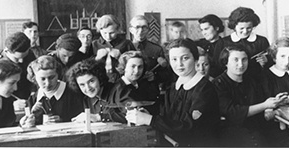Jews started settling in Galicia and Bukovina in the 12th century, and the Jewish population of these regions reached close to one million on the eve of the Holocaust. Most of the Jews of these regions lived in small towns (Shtetlekh in Yiddish), and in some of these they constituted a majority of the population. At the beginning of the 20th century a significant proportion of the regions’ Jews lived in the countryside – according to some estimates, up to 36.6 %.
Due to the particular political and social conditions of the Polish-Lithuanian kingdom, Jewish self-government institutions in the area reached a height of their development, and were fully and organically integrated in the corporative fabric of the feudal country. The Jewish population, in fact, embodied a separate medieval corporation which was, economically and socially, an intrinsic part of Polish society. The rights, social standing and relationships of this population with the central government were mandated by special legislation – the privilegia or charters – which the Jews were granted by the rulers of Poland and Lithuania. The needs of the Jewish communities and their representation before the government were handled by autonomous bodies – the Kehalim – and their various institutions. During the period following the divisions of Poland, under Austrian rule, the Jewish autonomous institutions lost their corporative jurisdiction and dealt mainly with religious, educational and welfare issues. Despite this loss of autonomy, the Jewish communities of Galicia and Bukovina – like those of Poland in general – managed to preserve their position as influential social organizations and their unique organizational, cultural and social characteristics.
The community database offers detailed information about 498 communities in Galicia and Bukovina, with many more being worked on.
For those interested in genealogical research, this is a good place to start. Users can filter the community database by community or by the list of administrative districts, if they do not know the name of the specific community.
Many places have more than one way of spelling. To view different variations click here.






